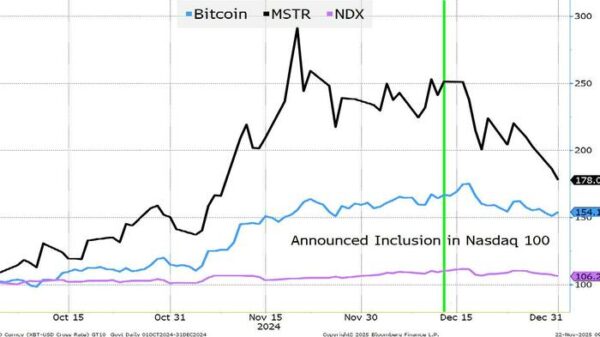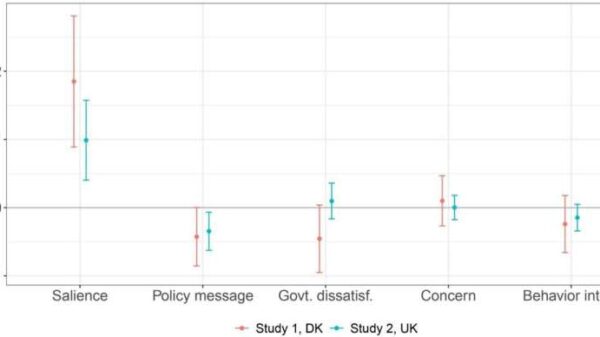Bitcoin has reached a new all-time high, surpassing $125,000 for the first time, fueled by unprecedented demand from exchange-traded funds (ETFs) and institutional investors. As of October 7, 2025, the cryptocurrency has stabilized around $124,000, following a brief retreat from its peak, but many analysts anticipate further upward movement in the coming months.
The surge in Bitcoin’s value can be attributed to a confluence of factors, including record ETF inflows, significant institutional buying, and favorable macroeconomic conditions. In the first week of October, US spot Bitcoin ETFs attracted over $3.2 billion in net inflows, marking the highest weekly total of the year. This influx has intensified buying pressure in the spot market, contributing to the rising price.
Key Factors Driving Bitcoin’s Rally
Institutional investors have played a crucial role in this price rally. Major corporations and asset management firms have increased their Bitcoin acquisitions, both directly and through ETFs, leading to a diminishing supply available for trading on exchanges. Financial data indicates that corporate treasuries and digital asset funds are accumulating Bitcoin at an unprecedented pace.
Simultaneously, the dollar index has been declining, making Bitcoin and similar assets more appealing as alternative stores of value. With rising global inflation concerns and volatility in equity markets, many investors are turning to Bitcoin as a hedge against traditional market risks. The current price stabilization near $124,000 reflects a strong buying sentiment, as buyers remain active in this market.
Technical indicators suggest a critical moment for Bitcoin. The price range between $125,000 and $126,000 has emerged as a key resistance zone. If Bitcoin can close above this range with substantial trading volume, it may pave the way for further gains, potentially reaching $130,000 or even $150,000 in the near future. Conversely, the $120,000 to $123,000 range has become a vital support area; a drop below this could indicate a short-term correction.
Market Sentiment and Future Predictions
Analysts emphasize that if Bitcoin maintains prices above $123,000, this could establish a new base for future growth. The influence of ETF inflows on Bitcoin’s price has been a topic of significant discussion, as these funds effectively remove Bitcoin from the open market, constraining supply and heightening the asset’s value amid increasing demand.
On-chain analytics reveal a significant drop in exchange reserves, indicating that holders are opting to transfer Bitcoin to cold wallets rather than keeping it on exchanges, reflecting optimism about future price increases. Institutional investors are also locking their coins in custody and cold storage, further tightening the liquid supply.
Global economic conditions continue to favor Bitcoin’s rise. A weaker US dollar has enhanced Bitcoin’s attractiveness as a hedge against fiat currency depreciation. Investors are diversifying into digital assets due to inflationary pressures and the unpredictable interest rate policies of major central banks. As equity markets exhibit volatility, Bitcoin has cemented its status as a preferred alternative investment.
While the outlook remains positive, potential regulatory changes could impact market sentiment. Unexpected tax regulations or cross-border restrictions could create uncertainty, prompting investors to proceed with caution. Keeping a close eye on regulatory updates is essential, as they will significantly influence future trends in the digital asset space.
The prevailing sentiment among analysts suggests that if ETF inflows continue alongside strong institutional demand, Bitcoin is poised for sustained momentum. A breakout above $126,000 could lead to further price increases, with projections suggesting a possible reach of $150,000 by the end of 2025, provided market conditions remain favorable.
In a neutral scenario, Bitcoin may experience sideways consolidation between $120,000 and $125,000, allowing short-term traders to realize profits while new buyers enter the market at lower levels. This period of consolidation can help reset the market after such a strong rally.
Conversely, a bearish scenario could arise from decreasing ETF inflows or negative regulatory developments. If Bitcoin falls below $120,000, a deeper correction could ensue, with critical support zones between $100,000 and $110,000. While sharp pullbacks are common in Bitcoin’s history, they often present opportunities for long-term accumulation.
Ultimately, while Bitcoin’s price has reached unprecedented heights, the market’s inherent volatility means that fluctuations are inevitable. Long-term trends indicate Bitcoin is entering a new growth phase, supported by real-world adoption and institutional engagement. As the available supply diminishes, the long-term outlook for Bitcoin remains bullish, although traders must remain vigilant to navigate the rapid cycles typical of the cryptocurrency market.




































































